Hair Transplant
Get Free Consultation

Introduction
Hair transplantation is an outpatient surgical procedure that removes hair follicles from donor site of the scalp, to a bald or balding part of the head known as the ‘recipient site. The procedure is primarily used to treat scalp baldness in male, but occasionally it may be used to restore eyelashes, eyebrows, beard hair, chest hair, and pubic hair and to fill in scars.
Latest hair transplantation techniques harvest and transplant hair “follicular units” in their natural groupings to achieve a natural appearance by mimicking original hair orientation. This procedure is called follicular unit transplantation (FUT), the old technique is called strip harvesting.
Pre-operative assessment and planning
The surgeon starts with analyzing the patient’s scalp to evaluate the donor areas, and the recipient area, then discusses their preferences and expectations, and advises the patient on the best approach either in person or through patient photos.
Folliscopy is a good device to know the actual existing density of hair, so that postoperative results of newly transplanted hair grafts can be accurately assessed. Off Course a full history of the patient will be taken, along with a full physical exam. The patient should avoid any blood thinner, or over the counter medicine at least 3 days prior the procedure.
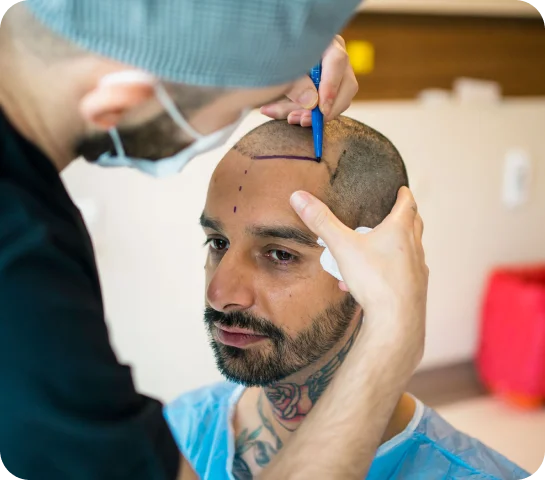

Pre-operative assessment and planning
The surgeon starts with analyzing the patient’s scalp to evaluate the donor areas, and the recipient area, then discusses their preferences and expectations, and advises the patient on the best approach either in person or through patient photos.
Folliscopy is a good device to know the actual existing density of hair, so that postoperative results of newly transplanted hair grafts can be accurately assessed. Off Course a full history of the patient will be taken, along with a full physical exam. The patient should avoid any blood thinner, or over the counter medicine at least 3 days prior the procedure.
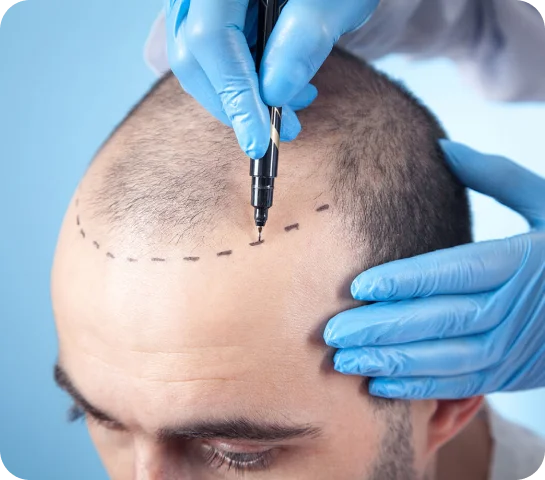
Harvesting methods
Transplant procedure is performed on an outpatient basis in the hospital. Under sterile condition, and local anesthesia the donor scalp is harvested.
Generally there are two techniques for harvesting hair follicles, each with their own advantages and disadvantages, follicular unit extraction (FUE), and Strip harvesting. Regardless, technique has been used, proper extraction of the hair follicle is essential to ensure the viability of the transplanted hair. Hair follicles grow at a slight angle to the skin’s surface, so transplanted tissue must be removed at a corresponding angle.
1.Follicular unit extraction (FUE)
With this technique, individual follicular units containing 1 to 4 hairs are; this is performed by using tiny punches of between 0.6mm and 1.0mm in diameter. The surgeon then uses very small micro blades or fine needles to puncture the sites for receiving the grafts, placing them in a predetermined density and pattern, and angling the wounds in a consistent fashion to promote a realistic hair pattern. Recently we started using the hair gun to implant the hair follicles in the skin without the need for puncture FUE takes place in a single long session or multiple small sessions. The FUE procedure is more time consuming than strip surgery. An FUE surgery time varies according to the surgeons experience, speed in harvesting and patient characteristics. The procedure can take anywhere from a couple to 8 hours , depending on the number of hair grafts The advantage of FUE harvesting is no linear incision on the back of the head and it doesn’t leave a linear scar, so no suture removal is required. The final result looks very natural.
Recovery time from Micro Grafting FUE is usually less than 7 days.
Disadvantages are more times needed for the procedure and higher cost to the patient. It requires high skill and expertise from the surgeons because the procedure is physically demanding and the learning curve to acquire the skills necessary is lengthy and tough.
2.Strip harvesting
Strip harvesting is used to be the most common technique for removing hair and follicles from a donor site. The surgeon harvests a strip of skin from the posterior scalp, in an area of good hair growth. The strip size is about 1–1.5 x 15–30 cm. Then the surgeon or his team begins to dissect individual follicular unit grafts from the strip. Then they clean excess fibrous and fatty tissue in a careful way to avoid damage to the follicular cells. Currently we apply ‘Trichophyte closure’ which results in much finer scars at the donor area.
Finally the surgeon uses fine needles to puncture the sites for receiving the grafts, he has to place them in a predetermined density and pattern, and angling the wounds in a consistent fashion to promote a normal hair pattern.
Disadvantages of Strip harvesting are thin linear scar in the donor area, which is typically covered by a patient’s hair even at relatively short lengths, longer recovery period which is around 2 weeks, and the need for stitches/staples removal by medical personnel.
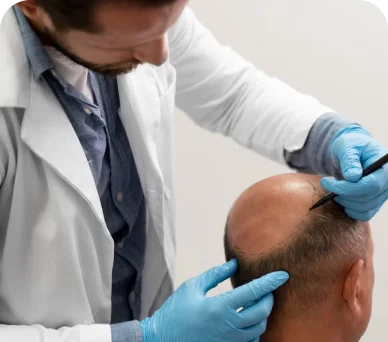
Post-operative care
Post care is very important to prevent the loss of the newly implanted hair graft, so it is crucial that the patient post care doctor recommendations.
- Using semi-permeable dressing, which allows seepage of blood and tissue fluid, to be applied and changed at least daily.
- The recipient area must be shielded from the sun,
- Shampooing should be started two days after the surgery. Some surgeons will have the patient shampoo the day after surgery. Shampooing is very important to prevent scabs from forming around the hair shaft, and prevent any loss of newly transplanted hair follicles during the first 7 to 10 days post-op.
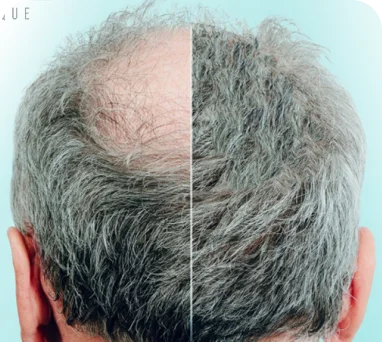
Side effects
Hair thinning, known as “shock loss”, is a common side effect that is usually temporary. Bald patches are also common, as fifty to a hundred hairs can be lost each day.
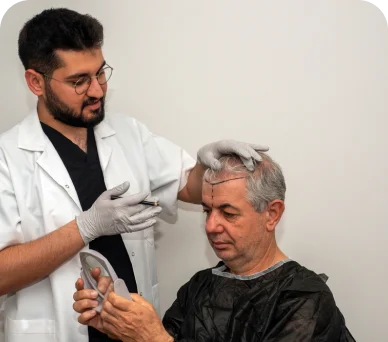
Expectation
Some of the transplanted hairs will fall inevitably during the first ten days, because they are traumatized by their relocation. This is referred to as “shock loss”. After two to three months new hair will begin to grow from the moved follicles. The patient’s hair will grow normally, and continue to thicken through the next six to nine months.
Any subsequent hair loss is likely to be only from untreated areas. Some patients elect to use medications to retard such loss, while others plan a subsequent transplant procedure to deal with this eventuality

Contact Us for Free Advice
testimonials
Customers about us

Brian Mitchell

Emily Chang

